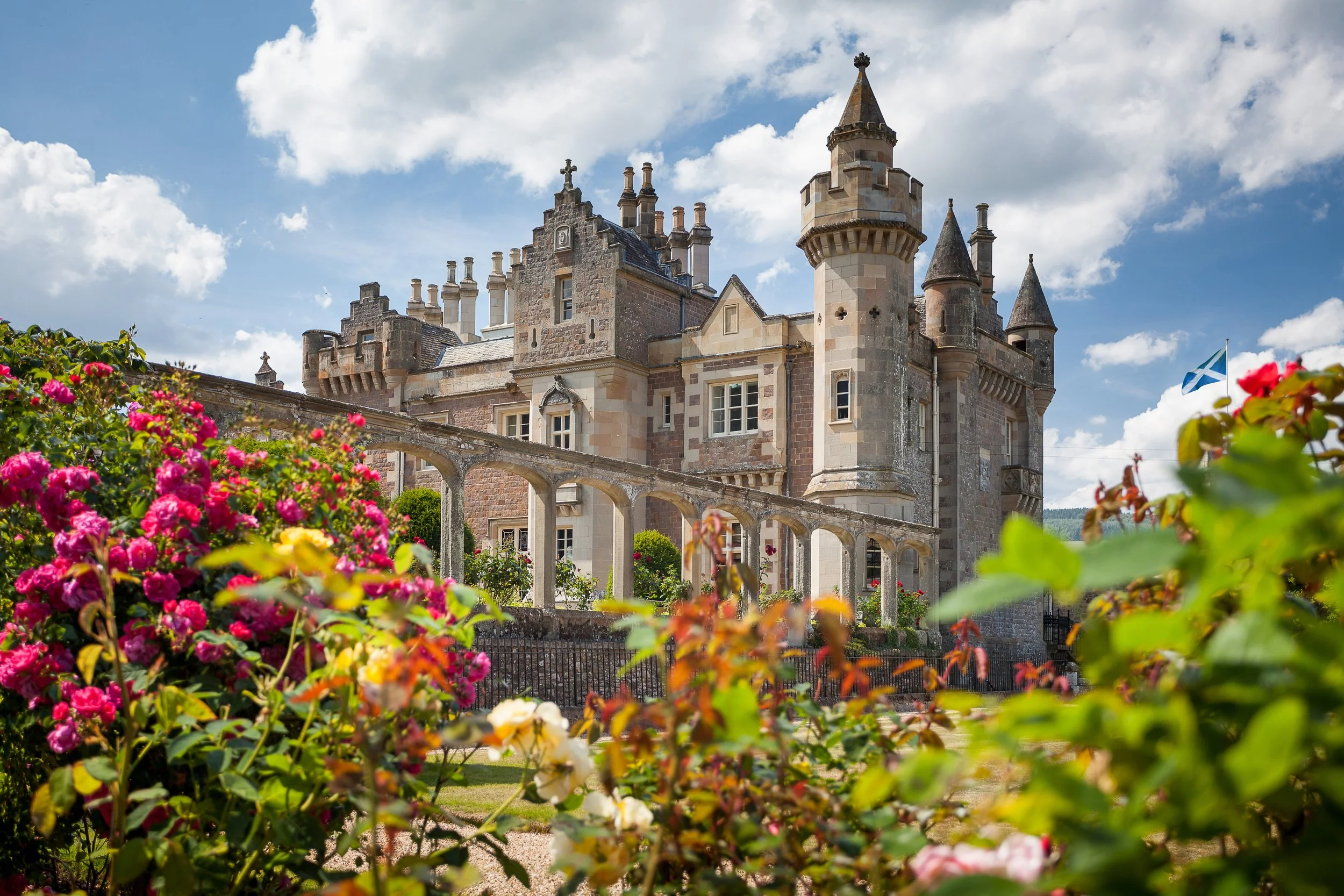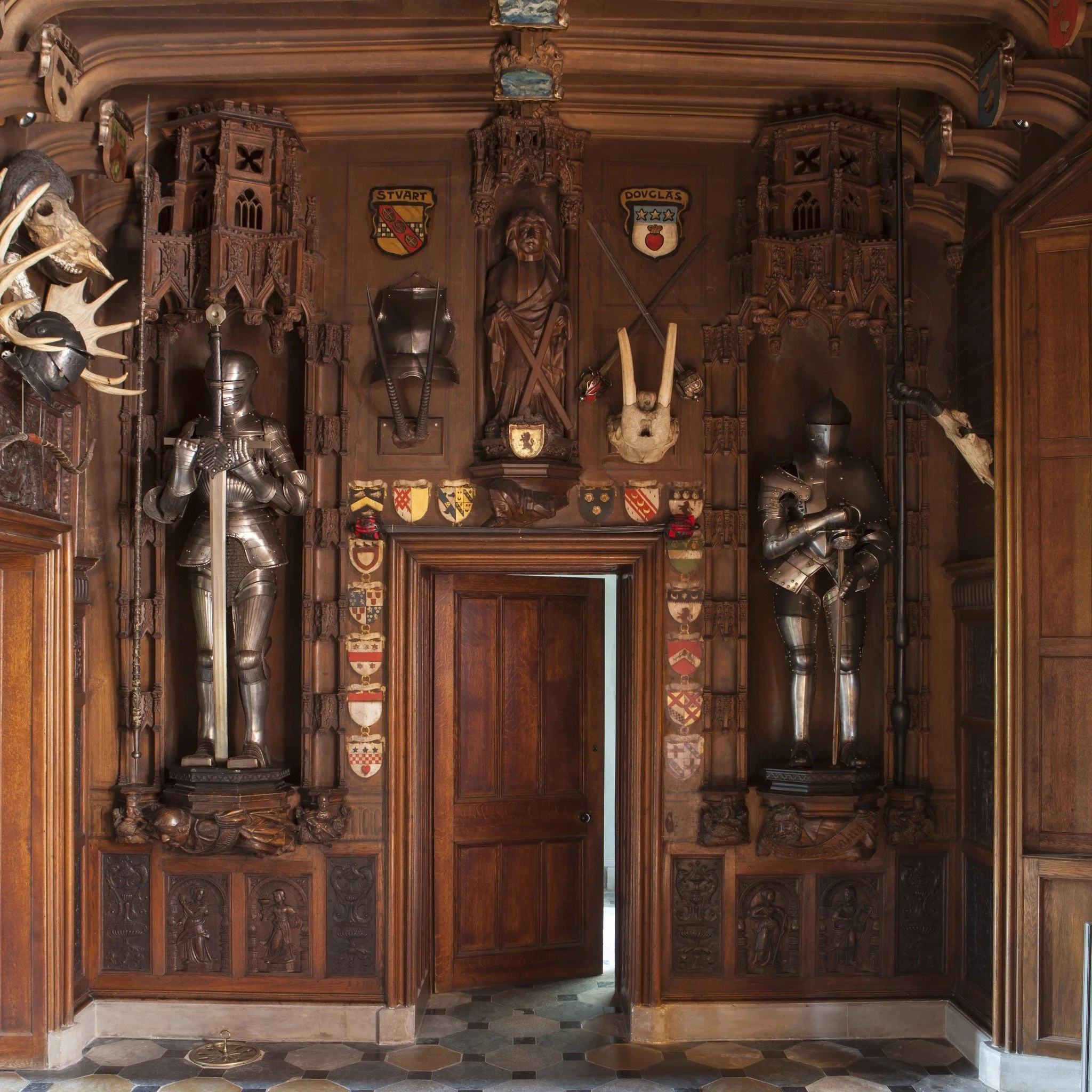Abbotsford
A fairytale house set on the banks of the Tweed, Abbotsford is the sumptuous home of Sir Walter Scott – one of the most famous Scottish writers of all
When it comes to literary landmarks, Sir Walter Scott’s ‘palace of the imagination’ takes some beating. A fantastical creation, it was built from the proceeds of an incredibly successful literary career – although it was a passion project that nearly bankrupted him.
A pioneer of the historical novel genre, nineteenth century novelist Scott (1771-1832) was one of the most famous writers of his day, known throughout the English-speaking world. He made his name through works that remain classics of Scottish and European literature, including Rob Roy, Ivanhoe and Waverley.
Serving as Sheriff-Depute of Selkirkshire – a welcome supplement to his income – Scott needed to spend part of the year close to the courtroom in Selkirk. For a time, he rented a house at Ashiestiel but in 1811 he bought what he called a ‘mountain farm’ on ‘a bare haugh and bleak bank by the side of the Tweed’. Although called Newarthaugh on the title deeds, it was known as Cartleyhole by locals. However, Scott immediately renamed it Abbotsford after the ford across the Tweed below the house once used by the monks of Melrose Abbey.
Initially, he made only incremental changes to the farmhouse although it was later demolished to make way for a much grander building. Many contributed ideas and sketches for the building that was to come – some professional, some less so – and Abbotsford as it is known today began to take shape.
Scott was a generous host, with Abbotsford visited by many of the literary greats of the time, from Lord Byron to Charles Dickens, as well as notable politicians, nobles and many of his own readers.
A monument to the writer’s personal tastes, talents and tragedies, Scott was determined to keep Abbotsford in his family as he worked to pay off huge debts after near-bankruptcy from various failed business dealings.
Although Scott was an obsessive collector – of books, weaponry and artefacts, much of which can still be seen in the Abbotsford Collections – the house itself was his most cherished possession. The architecture and interior design of his ‘flibbertigibbet of a house’ made it an iconic building of the 19th century Scottish Baronial style – one that was opened to the public in 1833, a year after his death, and continues to be visited by thousands every year.
Contemporary writing
Abbotsford remains a place of literary pilgrimage, with the writer’s spirit living on in a festival held locally every summer. The Borders Book Festival, established in 2004, offers a platform for new and established contemporary writers, along with historians, politicians, sports personalities and more. The festival was hosted at Abbotsford in 2021 to mark the 250th anniversary of Sir Walter Scott’s birth, but typically takes place in the peaceful grounds of the Harmony Gardens in nearby Melrose.
Further info
There are Abbotsfords named after Scott’s home around the world, including in Canada, the US, Australia, New Zealand and South Africa. Today, this wonderful house and its formal Regency gardens can be visited all year round. There is also an excellent visitor centre and café on site.
Image credits: The Abbotsford Trust; South of Scotland Destination Alliance



